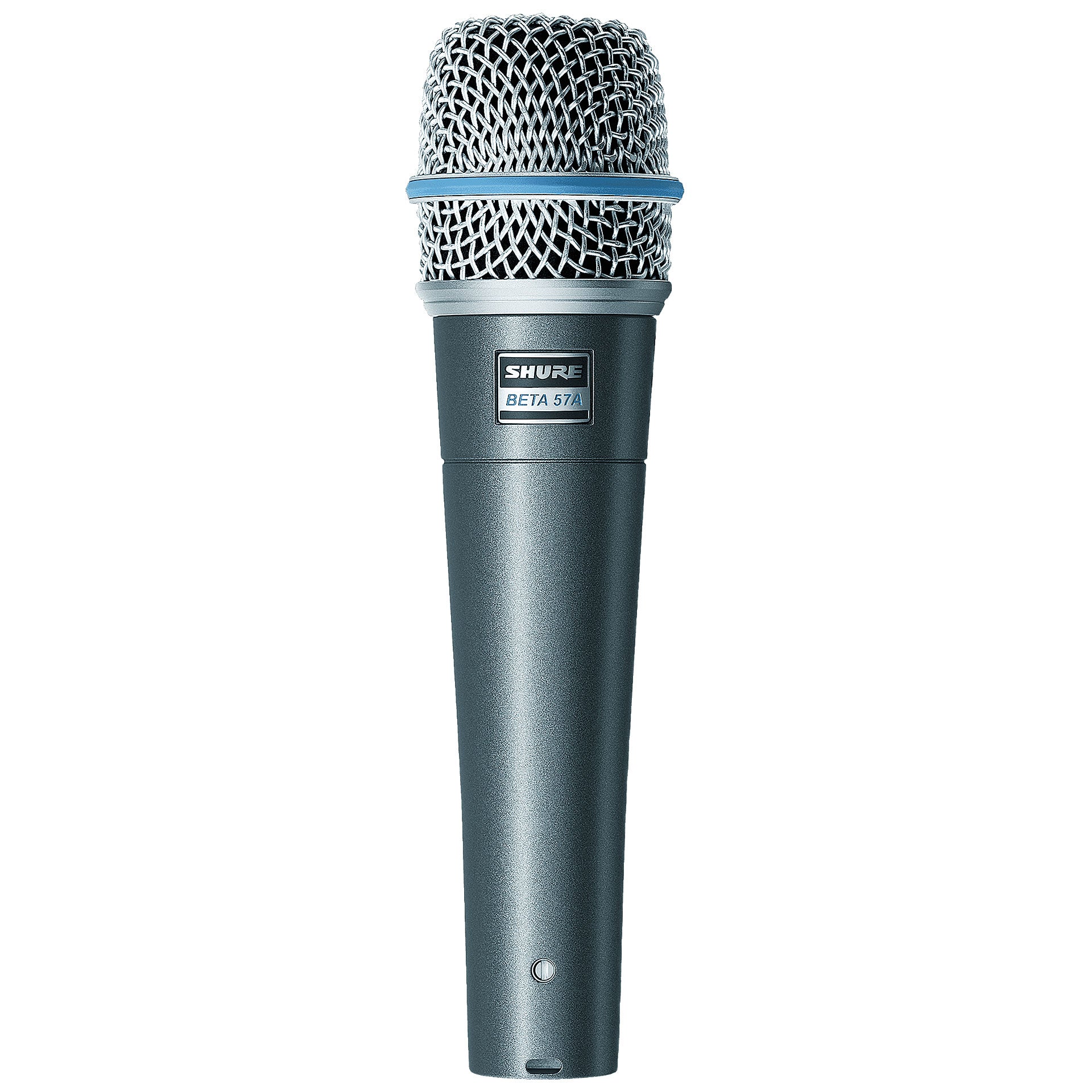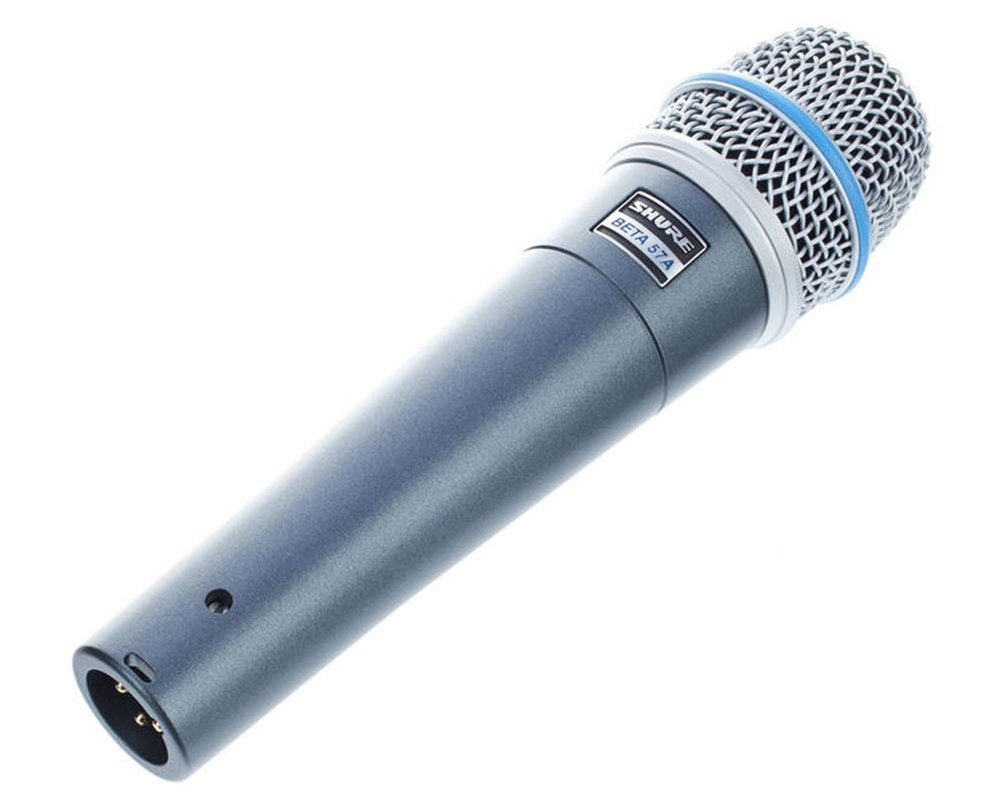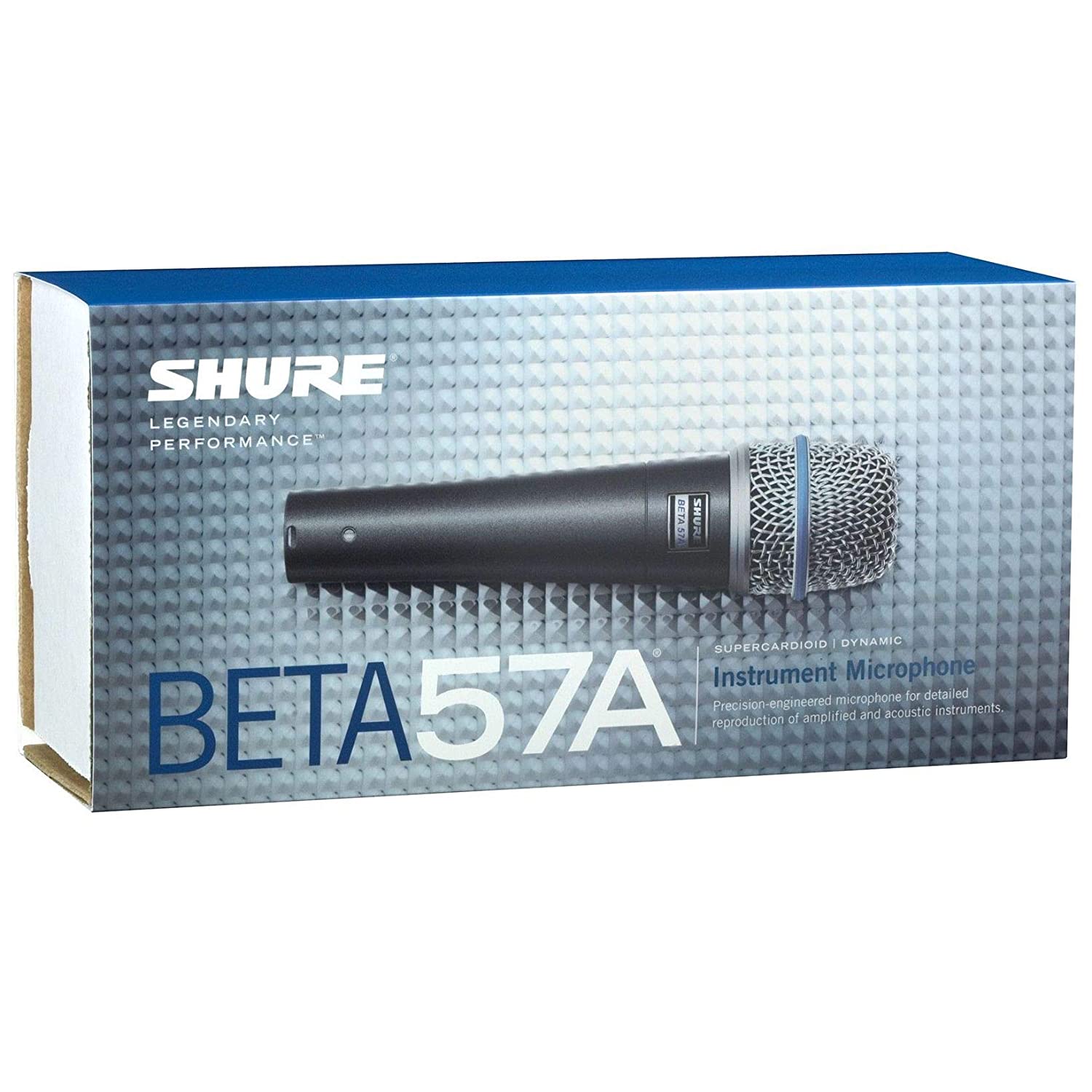Description
PRODUCT DETAILS
What is the Beta 57A best suited to?
It’s a premium instrument mic ideally suited for the professional musician looking to mic up many types of amplified and acoustic instruments such as guitar amps, acoustic guitar, saxophone, snare drum and brass. It can also be used by vocal artists. The Beta 57A has the quality and ruggedness to be used both on stage and in the studio.
What are the characteristics of the Beta 57A?
It has a tailored frequency response provides warmth and presence and maintains a true supercardioid pattern throughout its frequency range. This insures high gain-before-feedback, maximum isolation from other sound sources, and minimum off–axis tone coloration. The hardened steel mesh grille facilitates use of proximity effect as well as resisisting wear and abuse.
- Tailored frequency response provides drums, guitars, vocals, and horns with studio quality sound
- Uniform supercardioid pattern for high gain-before-feedback and superior rejection of off–axis sound
- Hardened steel mesh grille that facilitates use of proximity effect and resists wear and abuse
- Neodymium magnet for high signal–to–noise ratio output
- Minimally affected by varying load impedance
- Advanced pneumatic shock mount system that minimizes transmission of mechanical noise and vibration
- Legendary Shure quality and reliability
General Description
The Shure BETA 57®A is a precision-engineered, dynamic microphone designed for professional live sound reinforcement and studio recording. A tight, supercardioid pattern delivers high gain before feedback, maximum sound isolation, and minimum off-axis tone coloration.
The tailored frequency response of the versatile Beta 57A accentuates the fine details of amplified and acoustic instruments, especially in high sound pressure level(SPL) environments. A proven shock mount system, hardened steel-mesh grille, and superior build quality withstand the rigors of daily sound reinforcement.
Features
- Premier live performance microphone with Shure quality, ruggedness, and reliability
- Uniform supercardioid pick-up pattern for maximum gain before feedback and superior rejection of off-axis sound
- Tailored frequency response specifically shaped for guitars, drums and vocals
- Neodymium magnet for greater sensitivity and higher output
- Advanced pneumatic shock mount system that minimizes transmission of mechanical noise and vibration
- Dent-resistant steel mesh grille and enamel coated die-cast metal construction resist wear and abuse
Applications
General Rules for Use
- Do not cover any part of the microphone grille with your hand, as this will adversely affect microphone performance.
- Aim the microphone toward the desired sound source (such as the talker, singer, or instrument) and away from unwanted sources.
- Place the microphone as close as practical to the desired sound source.
- Work close to the microphone for extra bass response.
- Use only one microphone to pick up a single sound source.
- For better gain before feedback, use fewer microphones.
- Keep the distance between microphones at least three times the distance from each microphone to its source (“three to one rule”).
- Place microphones as far as possible from reflective surfaces.
- Add a windscreen when using the microphone outdoors.
- Avoid excessive handling to minimize pickup of mechanical noise and vibration.
Applications and Placement
The following table lists the most common applications and placement techniques. Keep in mind that microphone technique is largely a matter of personal taste; there is no one “correct” microphone position.
| Application | Suggested Microphone Placement | Tone Quality |
|---|---|---|
| Guitar & Bass Amplifiers | 2.5 cm (1 in.) from speaker, on-axis with center of speaker cone. | Sharp attack; emphasized bass. |
| 2.5 cm (1 in.) from speaker, at edge of speaker cone. | Sharp attack; higher frequency sound. | |
| 15 to 30 cm (6 to 12 in.) away from speaker and on-axis with speaker cone. | Medium attack; full, balanced sound. | |
| 60 to 90 cm (2 to 3 ft.) back from speaker, on-axis with speaker cone. | Softer attack; reduced bass. | |
| Snare Drum | 2.5 to 7.5 cm (1 to 3 in.) above rim of top head of drum. Aim mic at drum head. | Most “snap” from drumstick. |
| Tom-Toms | One mic on each tom, or between each pair of toms, 2.5 to 7.5 cm (1 to 3 in.) above drum heads. Aim each microphone at top drum heads. On double head toms, you can also remove bottom head and place a mic inside pointing up toward top drum head. | Medium attack; full, balanced sound. |
| Brass & Woodwinds | Brass: 30 to 90 cm (1 to 3 ft.) away, on-axis with bell of instrument. | Bright, clear sound. |
| Woodwinds: 2.5 to 15 cm (1 to 6 in.) away, on-axis with bell of instrument. | Bright, clear sound. | |
| Bell of instrument 90° off-axis from front of mic. | Softer, mellow sound. |
Avoiding Pickup of Unwanted Sound Sources
A supercardioid microphone has the greatest sound rejection at points 120° toward the rear of the microphone. Place the microphone so that unwanted sound sources, such as monitors and loudspeakers, are at these angles, not directly behind it. To minimize feedback and ensure optimum rejection of unwanted sound, always test microphone placement before a performance.

Recommended Loudspeaker Locations for Supercardioid Microphones
Proximity Effect
Unidirectional (cardioid) microphones progressively boost bass frequencies by 6 to 10 dB below 100 Hz when the microphone is at a distance of about 6 mm (1/4 in.) from the sound source. This phenomenon, known as proximity effect, can be used to create a warmer, more powerful sound. To prevent explosive low frequency sound during close-up use, the bass response gradually rolls off. This provides greater control and helps the user take advantage of proximity effect.
Specifications
Type
Dynamic (moving coil)
Frequency Response
50 to 16,000 Hz
Polar Pattern
Supercardioid
Output Impedance
290 Ω
Sensitivity
at 1kHz, open circuit voltage
-51 dBV/Pa (2 .8 mV)[1]
Weight
Net
0.275 kg (0.6 lbs)
Connector
Three-pin professional audio (XLR), male, balanced
Housing
Silver blue enamel-painted die cast metal with hardened, matte-finished steel mesh grille
[1] 1 Pa=94 dB SPL

Overall Dimensions

Typical Frequency Response

Typical Polar Pattern

Wiring Diagram






